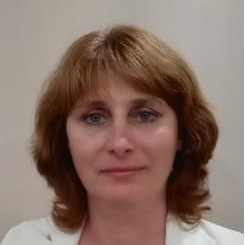Feature Papers for the 'General Mathematics, Analysis' Section
A special issue of Fractal and Fractional (ISSN 2504-3110). This special issue belongs to the section "General Mathematics, Analysis".
Deadline for manuscript submissions: closed (26 November 2023) | Viewed by 11902
Special Issue Editors
Interests: nonlinear analysis; mathematical modeling; fractional order systems
Special Issues, Collections and Topics in MDPI journals
Interests: applied mathematics; dynamical systems; differential equations; qualitative properties (almost periodicity, invariant manifolds, asymptotic properties, stability); impulsive perturbations; delays; fractional differential equations; neural networks; economic models
Special Issues, Collections and Topics in MDPI journals
Special Issue Information
Dear Colleagues,
We are pleased to announce the new Special Issue, “Feature Papers for General Mathematics, Analysis Section”. The motivation behind this Special Issue is to publish high-quality papers in Fractal and Fractional which demonstrate the recent progress in the fractional calculus analysis. The Guest Editor is the Section Editor-in-Chief of the “General Mathematics, Analysis” Section in Fractal and Fractional, and the Co-Editor is an Editorial Board Member, both working for the ongoing success of the journal. They welcome submissions from Editorial Board Members and outstanding scholars invited by the Editorial Board and by the Editorial Office. The scope of this Special Issue includes, but is not limited to, broad aspects of fractional calculus such as:
- Foundations of fractional analysis;
- Fractional-order derivatives and integrals;
- Fractional transforms;
- Special functions;
- Fractional integral inequalities;
- Fractional differential inequalities;
- Qualitative analysis of fractional systems;
- Fractional continuous systems;
- Fractional piecewise continuous systems;
- Fractional discrete systems;
- Fractional stochastic systems;
- Dynamical systems based on fractional calculus;
- Fractional analysis applications.
Dr. Ivanka Stamova
Dr. Gani Stamov
Guest Editors
Manuscript Submission Information
Manuscripts should be submitted online at www.mdpi.com by registering and logging in to this website. Once you are registered, click here to go to the submission form. Manuscripts can be submitted until the deadline. All submissions that pass pre-check are peer-reviewed. Accepted papers will be published continuously in the journal (as soon as accepted) and will be listed together on the special issue website. Research articles, review articles as well as short communications are invited. For planned papers, a title and short abstract (about 100 words) can be sent to the Editorial Office for announcement on this website.
Submitted manuscripts should not have been published previously, nor be under consideration for publication elsewhere (except conference proceedings papers). All manuscripts are thoroughly refereed through a single-blind peer-review process. A guide for authors and other relevant information for submission of manuscripts is available on the Instructions for Authors page. Fractal and Fractional is an international peer-reviewed open access monthly journal published by MDPI.
Please visit the Instructions for Authors page before submitting a manuscript. The Article Processing Charge (APC) for publication in this open access journal is 2700 CHF (Swiss Francs). Submitted papers should be well formatted and use good English. Authors may use MDPI's English editing service prior to publication or during author revisions.
Keywords
- fractional derivatives
- fractional operators and transforms
- fractional inclusions
- fractals
- fractional-order systems
- boundary value problems
- existence and uniqueness
- fixed point theory
- qualitative analysis
- analytical solutions
- discrete fractional calculus
- stochastic fractional calculus
- fractional inequalities
- approximations
- modeling and applications






